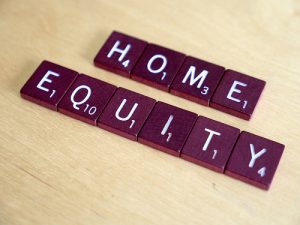
Who are Reverse Mortgages for?
A reverse mortgage is a versatile tool that can be useful in many different situations. It does not require monthly mortgage payments and does not become due until you no longer occupy your home.1 Some popular ways to use a reverse mortgage are:
- To supplement your retirement income if you are worried you will outlive your savings
- To leverage your financial assets by using the funds from your reverse mortgage when the stock market is down
- To pay for medical care
- To pay off debts
- To set up a line of credit as an emergency fund
- To cover ongoing monthly expenses
- To renovate your home
Do I qualify for a reverse mortgage?
In order to qualify for a reverse mortgage loan, you must be 62 years of age or older, own your home, and live in it as your primary residence. You must also have sufficient equity. This typically means that you owe less than 50% of the value of your home.2
While monthly payments on the loan are not required, you do need to continue to live in your home and pay property taxes and homeowners insurance to avoid defaulting. You also need to maintain the house in accordance with Federal Housing Administration guidelines.
What should I look out for?
Reverse mortgages, like all financial products, have pros and cons. It is important that you are fully aware of the potential pitfalls of the loan to help you avoid foreclosure. With a reverse mortgage you must continue to live in the home and remain financially responsible for it. If you move, fail to pay your property taxes or homeowners insurance, or fail to maintain the home, your loan can go into default which may result in foreclosure.
The payment from a reverse mortgage can be configured in a few different ways. One way is as a lump sum payment.3 The pitfall associated with this payment method is that the funds could run out quickly, leaving you unable to cover your costs of living.
Unless you need for a large sum of money upfront, it is recommended that you configure your loan payment as a line of credit or as monthly payments instead of a lump sum.
Once you move out of your home or pass away, the loan becomes due. At this point you or your heirs will have to decide if you want to sell or keep the home. You can sell the home to pay off the loan balance and receive any excess equity, or you can pay off the loan out of pocket and keep the home.
In the event the loan balance is greater than the value of the home, you or your heirs can either arrange to voluntarily turn over ownership of the property to the lender (Deed in lieu of foreclosure), or buy the home at 95% of the appraised value. It is important to note that a mortgage is a non-recourse loan, which means that you or your heirs will never have to pay more than the home is appraised for, and the lender cannot look to other assets for repayment.
How much money will I get?
The amount of home equity that a borrower can access depends on the following factors:
- The Borrower’s Age – The older you are when you take out a reverse mortgage, the more equity you will have access to.
- The Value of the Home – The home’s appraised market value determines how much home equity the borrower has. Typically, the higher the value of the home, the more potential exists for accessing its equity. However, the HECM currently has a lending limit set at $679,650, any equity above this amount will not be considered to calculate the payout.
- Current Interest Rates –A lower interest rate will result in a higher payout. A low interest rate also decreases the amount of money added to the loan balance over the life of the loan.
- The Borrower’s Financial Obligations – If the borrower has not paid off their existing mortgage, the amount needed to do so will be taken from the loan payment at closing.2 Also, if the borrower is unable to pay for property taxes and homeowners insurance from their savings, a portion of the loan payment will be withheld to ensure these expenses will be covered in future years.
Next steps, we encourage you to learn more about reverse mortgage solutions, contact a licensed loan advisor at 1 (800)976-6211 or click here to request a free, no obligation consultation to discuss your options.
Important Disclosures:
1 You must live in the home as your primary residence, continue to pay required property taxes, homeowners insurance, and maintain the home according to FHA requirements. Failure to meet these requirements can trigger a loan default that may result in foreclosure.
2 Your current mortgage(s) and any other existing liens against the property, must be paid off at or before closing.
3 The funds available to the borrower may be restricted for the first 12 months after loan closing, due to HECM reverse mortgage requirements. In addition, the borrower may need to set aside additional funds from the loan proceeds to pay for taxes and insurance.
